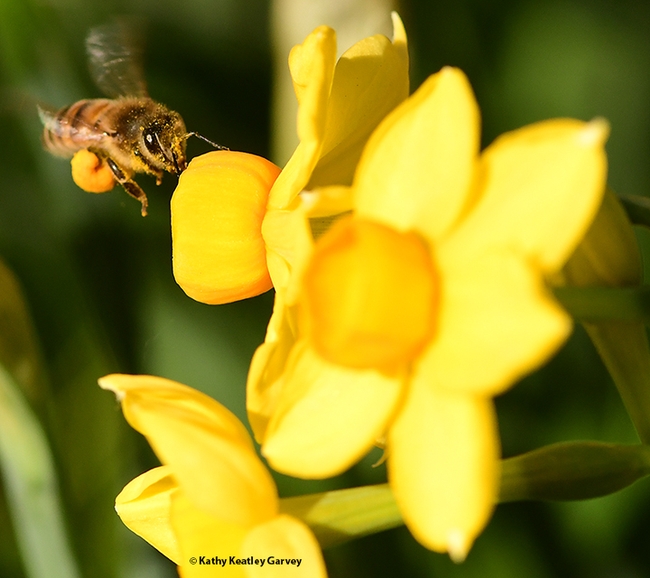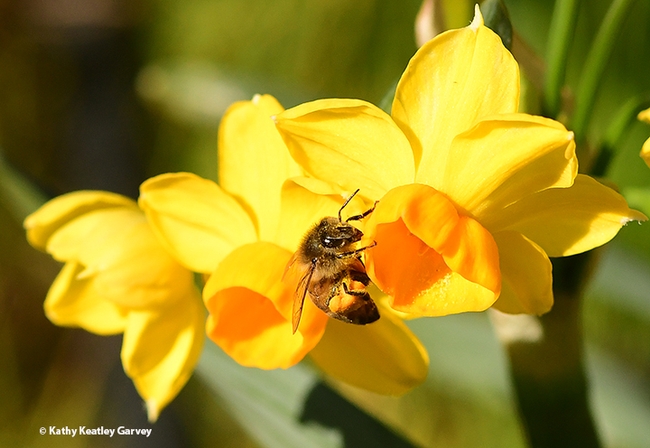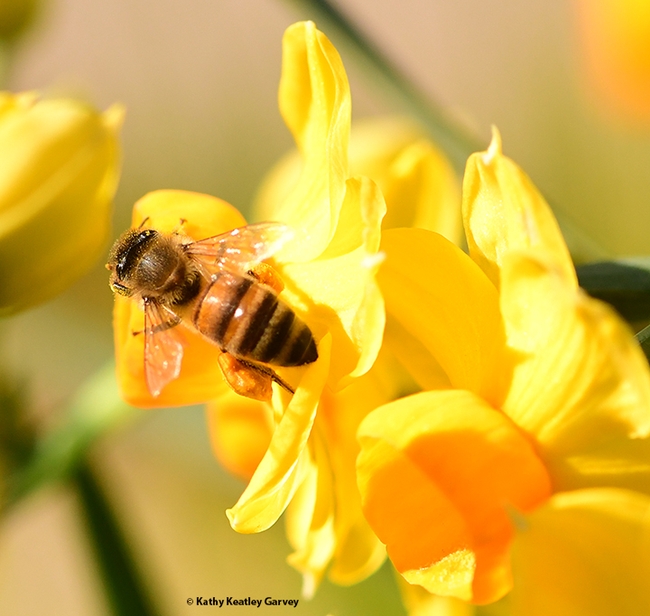Ever seen a honey bee foraging on a daffodil?
In the early spring, blooms are few and far between. Daffodils are not usually considered "bee plants." But if nothing else is blooming, bees will head over to the daffodils.
On a Feb. 6th visit to the UC Davis Ecological Garden at the Student Farm, we watched a lone honey bee--probably from the Harry H. Laidlaw Jr. Honey Bee Research Facility apiary on Bee Biology Road--gathering pollen in a nearby bed of daffodils.
The bee's heavy load of daffodil pollen looked like pure gold.
Norm Gary, UC Davis emeritus professor of entomology, writes about the importance of pollen in his book, Honey Bee Hobbyist: The Care and Keeping of Bees: "The importance of pollen in the health and vigor of the honey bee colony cannot be overstated. Bees need a balanced diet. Honey satisfies the bees' carbohydrate requirements, while all of the other nutrients--minerals, proteins, vitamins, and fatty substances--are derived from pollen. Nurse bees consume large amounts of pollen, converting it into nutritious secretions that are fed to developing larvae. During an entire year, a typical bee colony gathers and consumes around 77 pounds (35 g) of pollen."
Daffodils belong to the genus Narcissus, named for a handsome hunter, who, in Greek mythology, fell in love with his own reflection (the word "narcissism" means "excessive self-love").
There was a lot of love that day in the daffodil bed.
Attached Images:


